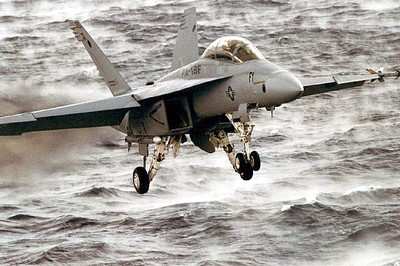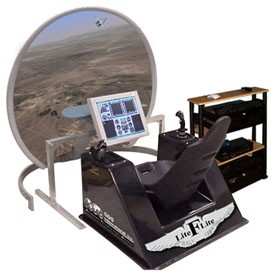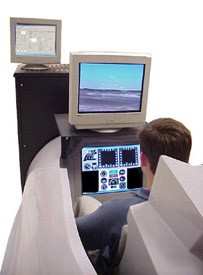Company Developing Innovative Answers For GA's #1 Killer
 For years the FAA has
contended the leading causes of general aviation fatal accidents
are related to weather and loss of control. When an unskilled (or
skilled, but non-proficient) pilot flies VFR into IMC, the
(usually) inevitable loss of control is the direct result of what
the experts call spatial disorientation (SD) -- an inability to
determine the aircraft's attitude in relation to the earth.
For years the FAA has
contended the leading causes of general aviation fatal accidents
are related to weather and loss of control. When an unskilled (or
skilled, but non-proficient) pilot flies VFR into IMC, the
(usually) inevitable loss of control is the direct result of what
the experts call spatial disorientation (SD) -- an inability to
determine the aircraft's attitude in relation to the earth.
Believe it or not, falling victim to SD (some pilots call it
spatial-D, or vertigo) is not just the province of the lowly
bug-smasher pilot -- it can bring down even the most highly-skilled
pilot.
Don't believe it? Consider that SDS International, a company
specializing in training, testing, evaluation and technical
solutions for advanced technology, has been developing an SD
training program since 2004. SDS' program is designed to help
pilots recognize, avoid, and recover from key SD situations, and
they're developing it for none other than the US Navy
and Marine Corp.
That's right, the same guys and gals who land their jets on a
moving carrier deck sometimes experience debilitating vertigo, and
the Navy is looking for a solution.

SDS's Advanced Technologies Division in Orlando, FL has earned a
contract modification to continue and enhance its ongoing Phase II
small business innovative research (SBIR) program awarded nearly
three years ago. The company is now developing the next-generation
of what it calls the Spatial Awareness Training System (SPATS).
SDS says it received this latest contract enhancement as a
direct result of the Navy's favorable assessment of the company's
Phase II prototype SD courseware and scenario-based SD simulation
capabilities.
SDS' approach to SD training is a three-phase program including
academic training (instructor-led, computer-based and web-based
training), immersion training (observing simulation-generated SD
scenarios), and simulation training (focused on hands-on,
SD-specific, scenario-based training using SDS' low-cost,
non-motion-based LiteFlite Reconfigurable Simulator).

SDS says the contract enhancement will allow it to broaden the
initial SPATS Phase II effort with the addition of simulators for
fixed-wing ejection-seat aircraft, fixed-wing non ejection-seat
equipped aircraft, and rotary-wing aircraft -- and subsequently,
significantly increasing the number and variety of SD scenarios
made possible through the increased simulation capability.
Under the enhancement, SDS will also develop a list of initial,
refresher, and annual SD training objectives to support the
near-term fielding of SPATS' innovative spatial strategies and
training approaches/capabilities for the US Navy.
Obviously, for the average private pilot, buying expensive
simulator time to learn to deal with a phenomenon easily avoided by
staying out of the clouds seems a waste. But consider the success
-- validated by the US Navy no less -- SDS has had with its
low-cost, LiteFlite system. A training program tailored to the
general aviation community using such a system might just be worth
the cost. Hello... SDS... are you reading this?
SDS says spatial-D is a potential problem for all aviators in
virtually all phases of flight, and the lessons it learns in
developing this program for the US Navy will have direct cost
benefits to training military, private, and commercial aviators
alike.

Let's hope SDS can put something together
(cost-effective) for us bug-smasher pilots!
 Unfortunate... ANN/SportPlane Resource Guide Adds To Cautionary Advisories
Unfortunate... ANN/SportPlane Resource Guide Adds To Cautionary Advisories ANN FAQ: Turn On Post Notifications
ANN FAQ: Turn On Post Notifications ANN's Daily Aero-Term (04.29.24): Visual Approach Slope Indicator (VASI)
ANN's Daily Aero-Term (04.29.24): Visual Approach Slope Indicator (VASI) ANN's Daily Aero-Term (04.28.24): Airport Marking Aids
ANN's Daily Aero-Term (04.28.24): Airport Marking Aids ANN's Daily Aero-Linx (04.28.24)
ANN's Daily Aero-Linx (04.28.24)





